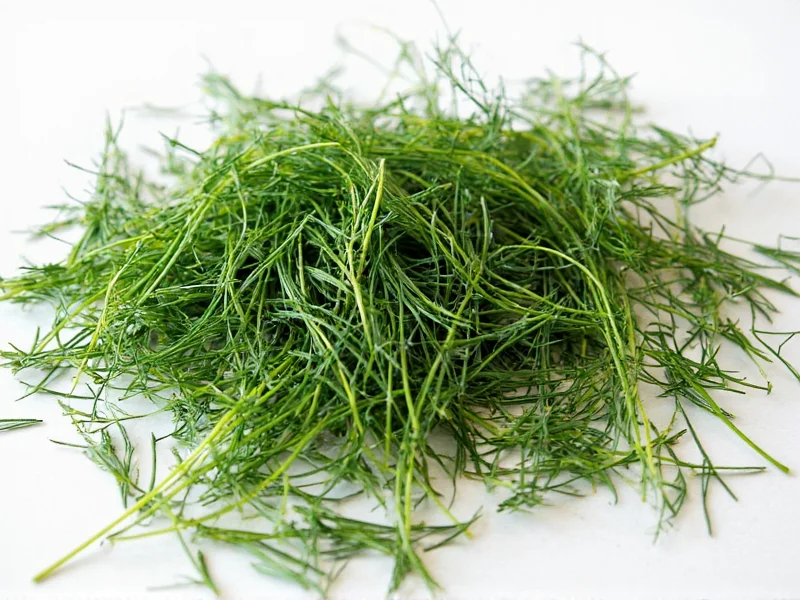Understanding the subtle distinctions between culinary herb terminology can prevent recipe mishaps and elevate your cooking. While many home cooks treat are dill weed and dried dill the same as identical terms, there are nuanced differences in labeling and usage that impact flavor intensity and substitution ratios.
Decoding Dill Terminology
The confusion around dill weed versus dried dill stems from inconsistent labeling practices across manufacturers. Botanically, dill weed refers specifically to the feathery leaves and tender stems of the dill plant. When these parts are dehydrated, they become dried dill weed—what most consumers simply call "dried dill."
Dill seeds, by contrast, come from the plant's flower heads and possess a stronger, more citrusy flavor profile. Reputable spice brands clearly distinguish between dried dill weed (leaves) and dill seeds on packaging, but budget brands often use ambiguous labeling.
Key Differences in Practical Cooking
When examining the difference between dill weed and dried dill, consider these practical factors:
| Characteristic | Dill Weed (Dried) | Dill Seeds |
|---|---|---|
| Plant Part | Leaves and tender stems | Mature seed pods |
| Flavor Profile | Grassy, delicate anise notes | Stronger, citrusy, slightly bitter |
| Texture | Finely crumbled green flakes | Hard, oval brown seeds |
| Substitution Ratio | 1:1 for fresh dill weed | 1 tsp seeds = 2 tsp dried weed |
Substitution Guidelines for Home Cooks
When recipes call for dried dill without specification, assume they mean dried dill weed. The critical question can I substitute dried dill for dill weed has a straightforward answer: yes, with attention to quantity.
Fresh dill converts to dried at a 3:1 ratio (3 parts fresh = 1 part dried). However, many cooks mistakenly use equal amounts, resulting in overpowering flavors. For delicate dishes like cucumber salad or fish dishes, reduce dried dill by 25% compared to fresh requirements.
When comparing dill weed dried versus fresh, remember that dried versions lose volatile oils during dehydration, yielding a more concentrated but less complex flavor. Add dried dill early in cooking to rehydrate and distribute flavor, while fresh dill should be added at the end.
Storage Best Practices
Proper storage affects whether is dried dill the same as dill weed in terms of quality over time. Both forms degrade when exposed to light, heat, and moisture. Store in airtight containers away from stoves and windows. Properly stored dried dill maintains peak flavor for 6-12 months, compared to 1-2 years for dill seeds.
Test potency by rubbing a pinch between your fingers—if the aroma is faint, it's time to replace your supply. This simple check prevents disappointment when following recipes that assume standard herb strength.
Culinary Applications
Understanding the difference between dried dill and dill weed matters most in these applications:
- Pickling: Dill seeds provide stronger flavor penetration; use dried weed for subtle notes
- Salmon dishes: Dried weed works better in rubs than seeds which can burn
- Dips and sauces: Dried weed blends smoothly; seeds create texture
- Baking: Seeds work better in breads; weed suits delicate pastries
Professional chefs often combine both forms—seeds in brines and weed in finishing sauces—to create layered dill flavor profiles. This technique answers the practical question what's the difference between dill weed and dried dill through application rather than theory.
Shopping Tips for Confident Purchases
When evaluating are dried dill and dill weed the same thing at the store, check these indicators:
- Color: Vibrant green indicates freshness; brownish hues signal degradation
- Texture: Should crumble easily between fingers, not feel powdery
- Smell: Pronounced grassy-anise aroma, not musty or faint
- Labeling: "Dill weed" specifies leaves; "dill" alone may mean seeds
Reputable brands like Simply Organic and Frontier Co-op clearly distinguish between products. When in doubt, contact the manufacturer—most provide detailed usage guides that clarify is dried dill the same as dill weed for their specific product.











 浙公网安备
33010002000092号
浙公网安备
33010002000092号 浙B2-20120091-4
浙B2-20120091-4